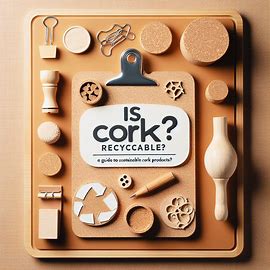Are Hangers Recyclable?
The Ultimate Guide: Are Hangers Recyclable? Unraveling the Mystery of Eco-Friendly Closet Choices
In today’s environmentally conscious world, the quest for sustainable living extends to every corner of our daily lives, including our closets. As we strive to reduce waste and make eco-friendly choices, a common question arises: are hangers recyclable? In this comprehensive guide, we’ll delve into the world of hangers, exploring their recyclability, eco-friendly alternatives, and tips for creating a more sustainable wardrobe.
Types of Hangers and Their Materials
Understanding the recyclability of hangers begins with a closer look at the materials they’re made of. Hangers come in various types, including plastic, metal, and wood. Plastic hangers, often used by retailers, can be made from different types of plastics, while metal hangers are typically crafted from steel or aluminum. Wooden hangers, known for their durability and elegance, are often made from renewable resources.
Not all hangers are created equal when it comes to recyclability. Plastic hangers, for instance, can pose a challenge due to the variety of plastics used and their limited recyclability. Metal hangers, on the other hand, are generally more recyclable, especially if made from a single material. Wooden hangers, while biodegradable, may not be suitable for traditional recycling methods.
How to Recycle Hangers
Recycling hangers can be a bit more nuanced than recycling traditional household items, but with the right approach, it is definitely possible. Here’s a step-by-step guide on how to recycle different types of hangers:
1. Check Local Recycling Guidelines:
- Before attempting to recycle hangers, familiarize yourself with the recycling guidelines in your local area. Recycling facilities may have specific rules about the types of hangers they accept.
2. Separate Materials:
- If you have a mix of hanger materials (plastic, metal, wood, etc.), sort them into separate categories. This helps streamline the recycling process and ensures each material can be properly processed.
3. Plastic Hangers:
- Some recycling centers accept certain types of plastic hangers. Check the recycling code on the hanger to determine the type of plastic. Look for recycling symbols, and if in doubt, contact your local recycling facility for guidance.
- Remove any non-plastic components, such as metal hooks or clips, as these might not be recyclable.
4. Metal Hangers:
- Metal hangers, particularly those made of steel or aluminum, are generally accepted at recycling centers. However, it’s crucial to remove any non-metal components like plastic coatings or attachments.
- Ensure the hangers are clean and free from any clothing items.
5. Wooden Hangers:
- Wooden hangers may not be recyclable in the traditional sense. Instead, consider repurposing them or donating them to local charities, second-hand stores, or schools.
- If the hangers are in poor condition, they can be broken down and used for craft projects or disposed of in a way that aligns with local waste disposal guidelines.
6. Bamboo Hangers:
- Similar to wooden hangers, bamboo hangers may not be widely accepted in traditional recycling systems. Explore local options for repurposing or donating them.
- If the hangers are no longer usable, check if there are specialized recycling facilities that accept bamboo products in your area.
7. Recycled Cardboard Hangers:
- Recycled cardboard hangers are designed to be recyclable. Place them in your paper recycling bin after ensuring they are clean and free from any non-recyclable components.
- Remove any plastic hooks or attachments before recycling.
8. Donate or Reuse:
- Consider donating hangers that are still in good condition to local charities, thrift stores, or community centers. This extends the life of the hangers and reduces overall waste.
- Reuse hangers in your own home or share them with friends and family.
9. Contact Recycling Centers:
- If you’re uncertain about whether your local recycling center accepts certain types of hangers, contact them directly. They can provide specific guidance based on their capabilities and recycling processes.
By following these steps and being mindful of local recycling guidelines, you can contribute to a more sustainable approach to hanger disposal. Always prioritize reuse and donation as the first options before considering recycling.
Eco-Friendly Alternatives
Embracing eco-friendly alternatives when it comes to hangers is a meaningful step toward creating a more sustainable and environmentally conscious wardrobe. Here are some popular eco-friendly alternatives to traditional hangers:
1. Bamboo Hangers:
- Material: Bamboo is a fast-growing, renewable resource that makes for an excellent eco-friendly hanger option.
- Benefits: Bamboo hangers are not only sustainable but also sturdy and durable. They provide a sleek and modern look while being gentle on the environment.
2. Recycled Cardboard Hangers:
- Material: Crafted from recycled paper and cardboard materials, these hangers offer a second life to recycled materials.
- Benefits: Recycling cardboard reduces the demand for new raw materials and minimizes environmental impact. These hangers are lightweight, making them suitable for lightweight clothing items.
3. Wooden Hangers from Sustainable Sources:
- Material: Opt for wooden hangers made from sustainably harvested wood, such as beech or bamboo.
- Benefits: Wooden hangers are durable and can be sourced from responsibly managed forests. They are an elegant and long-lasting alternative to traditional hangers.
4. Metal Hangers from Recycled Metal:
- Material: Look for metal hangers made from recycled steel or aluminum.
- Benefits: Choosing recycled metal hangers helps reduce the need for new raw materials and minimizes the environmental footprint associated with metal production. These hangers are strong and durable.
5. Fabric or Cloth Hangers:
- Material: Cloth or fabric hangers are often made from organic cotton or other sustainable materials.
- Benefits: These hangers provide a soft surface for delicate garments, are reusable, and can be a stylish addition to your closet. Look for options with a recycled or sustainable core.
6. DIY Upcycled Hangers:
- Material: Transforming existing hangers into something new through DIY projects or upcycling.
- Benefits: This option reduces waste by giving old hangers a fresh purpose. Consider wrapping hangers with fabric, yarn, or repurposing materials to create a unique and personalized look.
7. Cardboard Tube Hangers:
- Material: Some innovative companies produce hangers using cardboard tubes, providing a lightweight and eco-friendly option.
- Benefits: These hangers are made from recycled materials and are fully recyclable. They are particularly suitable for lighter clothing items.
8. Multi-Functional Hangers:
- Material: Look for hangers that serve multiple functions, such as those with clips or attachments for hanging pants, skirts, or scarves.
- Benefits: By investing in hangers that can accommodate various clothing items, you reduce the need for multiple types of hangers, minimizing overall consumption.
9. Minimalist Hangers:
- Material: Opt for simple and minimalistic hanger designs that use fewer materials.
- Benefits: Minimalist hangers are often lightweight and efficient, reducing the environmental impact associated with manufacturing more elaborate hanger styles.
10. DIY Repurposed Hangers:
- Material: Transforming everyday items into makeshift hangers, such as using old wooden crates, branches, or other repurposed materials.
- Benefits: This creative approach can breathe new life into items that would otherwise be discarded. It promotes resourcefulness and reduces the demand for new hangers.
Incorporating these eco-friendly alternatives into your wardrobe not only reduces your ecological footprint but also contributes to a more sustainable and mindful approach to fashion and consumption. When choosing hangers, consider durability, recyclability, and the environmental impact of the materials used to make more informed and eco-conscious decisions.
Tips for a Sustainable Wardrobe
In conclusion, the journey to a more sustainable lifestyle involves thoughtful choices in every aspect of our lives, including our closets. While the recyclability of hangers may vary, exploring alternative materials and recycling options can contribute to a greener future. By making informed choices, we can create a wardrobe that aligns with our environmental values.







